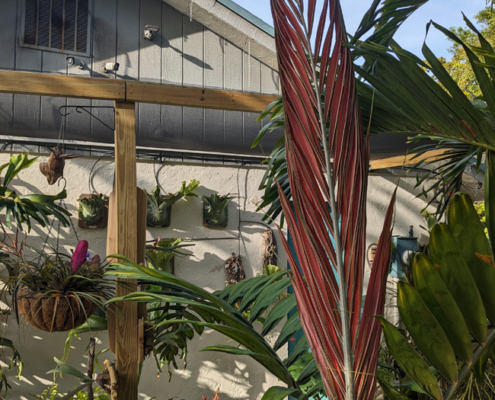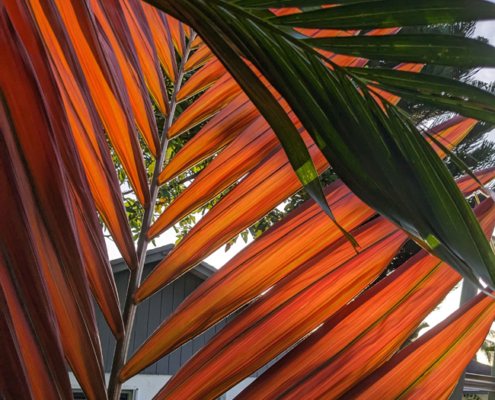Arecaceae
Plant Profile
Chambeyronia macrocarpa ‘watermelon’
(kam-beh-ROH-nee-ah) (mak-roh-KAR-pah)
Subfamily Arecoideae
Tribe Areceae
Subtribe Archontophoenicinae
- The “green form,” with a dark solid green crownshaft, are the most common of the forms.
- The “yellow form,” or C.hookeri, with a yellow crownshaft and the color extending up into the petioles. Observations have been consistent that this form has the most vivid and highest percentage of red leafs. This form is sometimes referred to as the “blond flamethrower”.
- The “watermelon form,” with the yellow and green streaked appearence of some watermelons in its crownshaft. It has been discussed that this may be the result of cross pollination between the green and yellow forms.
- C. houailou, which is distinguished by the entire unsegmented leaves it carries as a juvenile, and the exaggerated recurve to the fronds as an adult. It appears to almost never have the new red leaf characteristic of the other forms.
“As the national tree of New Caledonia, it becomes obvious why, when one is on approach to that country’s airport. This gorgeous tall emergent species can be seen poking its head above the forest, and becomes especially visible while sporting its trademark new leaf. After observing many cultivated Chambeyronia macrocarpa in private and public gardens, one begins to notice how variable this species is. Leaflet width varies greatly, as does the sheen, from glossy to matte finish, as well as different colorations on the crownshaft and petioles.” – Palmpedia
“The native range of this species is New Caledonia. It is a tree and grows primarily in the wet tropical biome.” – Kew
Location data from EOL provided by the National Museum of Natural History a Smithsonian entity.















